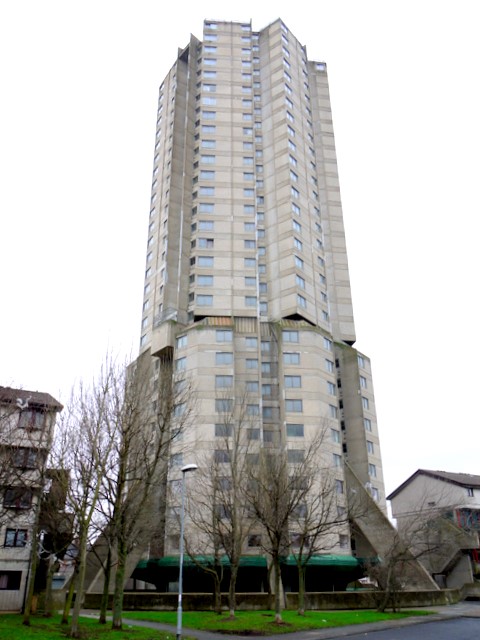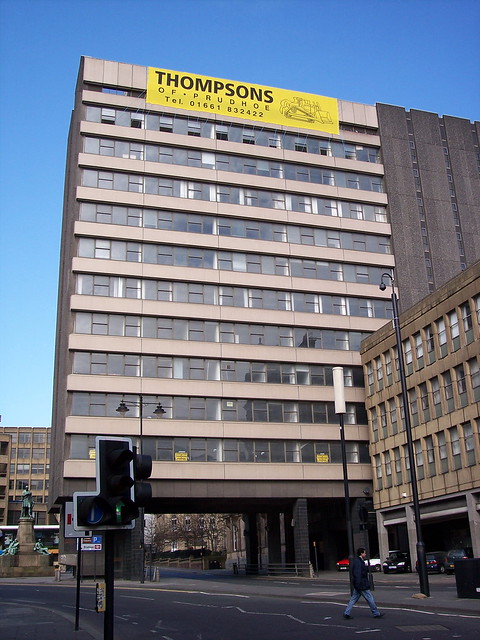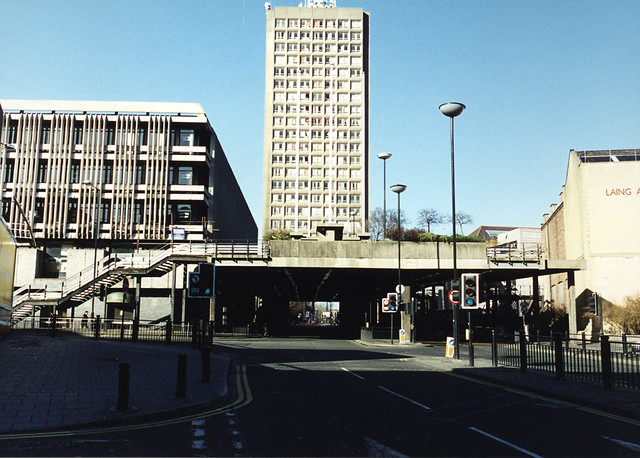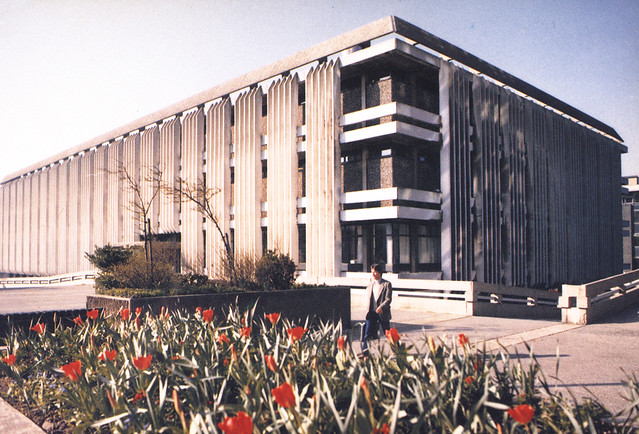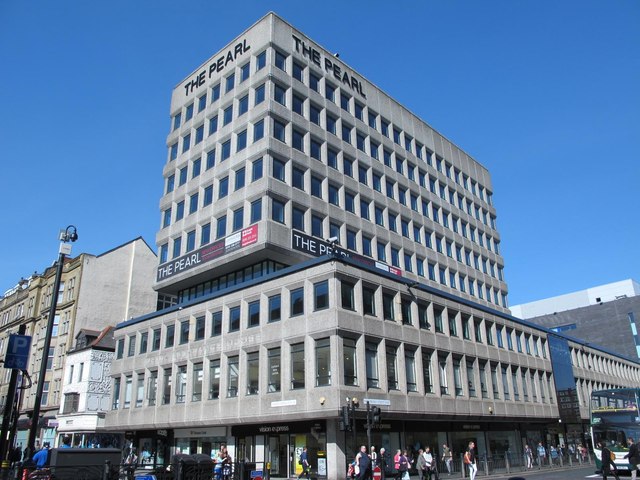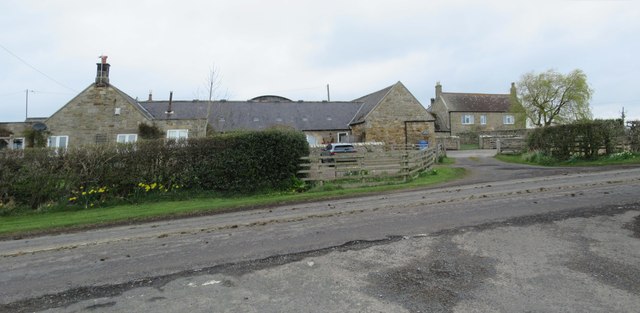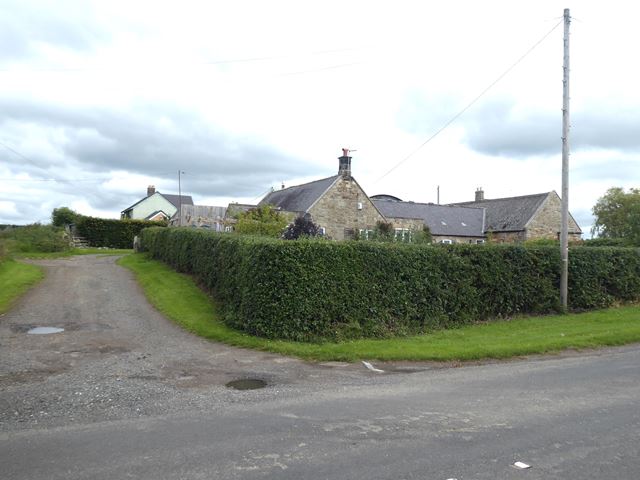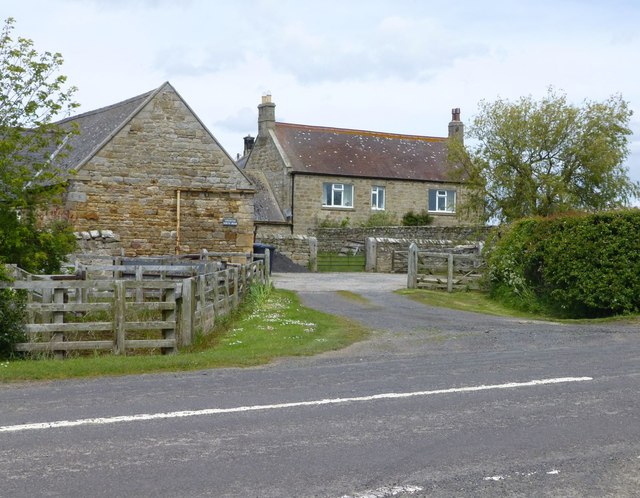Topics > Landmarks, Parks and Buildings > Architecture > Brutalist Architecture
Brutalist Architecture
Brutalist architecture flourished around the world from the 1950s to the mid-1970s and the style took advantage of new building materials and techniques. It grew out of the modernist architectural movement of the early 20th century. The term originated from the French word for "raw" and the term was used by Charles-Édouard Jeanneret ("Le Corbusier") to describe his choice of material béton brut (raw concrete). Architectural critic Reyner Banham adapted the term into "brutalism" to identify the emerging style.
Here are some examples of Brutalist architecture in North East England, some of which have since been demolished....click on the images for further details.
|
|
Apollo Pavilion, Peterlee 1969 by Victor Passmore. Extant; Grade II* listed on the National Heritage List for England. |
|
Trinity Square, Gateshead. A 7 storey car park, above a supermarket and department store. Designed by Luder & Worthington, opened in 1967. Demolished in 2010. |
|
|
|
Derwent Tower, Dunston, Gateshead. A 29-storey apartment block, commisioned by Whickham Council and Designed by the Owen Luder Partnership, opened in 1971. It was a prominent landmark, commonly known as "The Dunston Rocket". Demolished 2012. |
|
|
Westgate House, Newcastle Demolished 2006 |
|
|
Bank of England, Newcastle Demolished 2012 |
|
|
Demolished 1986 |
|
|
Dunelm House, Durham Extant, Grade II listed on the National Heritage List for England. |
|
|
Pearl Assurance Building, Newcastle Extant |
|
|
Bewick Court, Newcastle A 19 storey tower block with 133 residential apartments built in 1970 and designed by Taylor Woodrow. The building sits on top of a platform over John Dobson Street in Newcastle. Extant. Refurbished and re-clad. |
|
|
Central Library, Newcastle Demolished 2007.
|
|
|
Millburngate House, Durham Demolished 2016. |
|
|
Commercial Union House, Newcastle 1971, by Howell Brooks Tucker & Partners. Large office block, with a large projecting tower over Pilgrim Street. Demolished 2022. |
Brutalist architecture flourished from the 1950s to the mid-1970s, descending from the modernist architectural movement of the early 20th century. The term originates from the French word for "raw", as Le Corbusier described his choice of material béton brut, meaning raw concrete in French. Architects Alison and Peter Smithson are believed to have coined the term "Brutalism" in the 1950s and it became more widely used after British architectural critic Reyner Banham titled his 1966 book, The New Brutalism, using the term "Brutalism" to identify the style.
Brutalism became popular with governmental and institutional clients, with numerous examples in English-speaking countries (the United Kingdom, the United States, Canada, Australia), Western Europe (France, Germany, Italy), the Soviet Union, the Eastern Bloc (Slovakia, Bulgaria), and places as disparate as Japan, India, Brazil, the Philippines, and Israel. Examples are typically massive in character (even when not large), fortress-like, with a predominance of exposed concrete construction, or in the case of the "brick brutalists", ruggedly combine detailed brickwork and concrete. There is often an emphasis on graphically expressing in the external elevations and in the whole-site architectural plan the main functions and people-flows of the buildings. Brutalism became popular for educational buildings (especially university buildings), but was relatively rare for corporate projects. Brutalism became favoured for many government projects, tower blocks (high-rise housing), and shopping centres.
In its ruggedness and lack of concern to look comfortable or easy, Brutalism can be seen as a reaction by a younger generation to the lightness, optimism, and frivolity of some 1930s and 1940s architecture. In one critical appraisal by Banham, Brutalism was posited not as a style, but as the expression of an atmosphere among architects of moral seriousness. "Brutalism" as a term was not always consistently used by critics; architects usually avoided using it altogether. More recently, "brutalism" has become used in popular discourse to refer to buildings of the late twentieth century that are large or unpopular as a synonym for "brutal".
History
The term "brutalism" was originally coined by the Swedish architect Hans Asplund to describe Villa Göth in Uppsala, designed in 1949 by his contemporaries Bengt Edman and Lennart Holm. He originally used the Swedish-language term nybrutalism (new brutalism), which was picked up by a group of visiting English architects, including Michael Ventris. In England, the term was further adopted by architects Alison and Peter Smithson. The term gained wide currency when the British architectural historian Reyner Banham used it in the title of his 1966 book, The New Brutalism: Ethic or Aesthetic?, to characterise a somewhat recently established cluster of architectural approaches, particularly in Europe.
The best known proto-Brutalist architecture is the work of the Swiss architect Le Corbusier, in particular his 1952 Unité d'habitation in France and the 1953 Secretariat Building (Palace of Assembly) in Chandigarh, India. Brutalism gained considerable momentum in the United Kingdom during the mid-twentieth century, as economically depressed (and World War II-ravaged) communities sought inexpensive construction and design methods for low-cost housing, shopping centres, and government buildings. Nonetheless, many architects chose the Brutalist style even when they had large budgets, as they appreciated the 'honesty', the sculptural qualities, and perhaps, the uncompromising, anti-bourgeois, nature of the style.
Combined with the socially progressive intentions behind Brutalist streets in the sky housing such as Corbusier's Unité, Brutalism was promoted as a positive option for forward-moving, modern urban housing.
Characteristics
Brutalist buildings are usually formed with repeated modular elements forming masses representing specific functional zones, distinctly articulated and grouped together into a unified whole. Concrete is used for its raw and unpretentious honesty, contrasting dramatically with the highly refined and ornamented buildings constructed in the elite Beaux-Arts style. Surfaces of cast concrete are made to reveal the basic nature of its construction, revealing the texture of the wooden planks used for the in-situ casting forms. Brutalist building materials also include brick, glass, steel, rough-hewn stone, and gabions. Conversely, not all buildings exhibiting an exposed concrete exterior can be considered Brutalist, and may belong to one of a range of architectural styles including Constructivism, International Style, Expressionism, Postmodernism, and Deconstructivism.
Another common theme in Brutalist designs is the exposure of the building's functions—ranging from their structure and services to their human use—in the exterior of the building. In the Boston City Hall, designed in 1962, the strikingly different and projected portions of the building indicate the special nature of the rooms behind those walls, such as the mayor's office or the city council chambers. From another perspective, the design of the Hunstanton School included placing the facility's water tank, normally a hidden service feature, in a prominent, visible tower.
Brutalism as an architectural philosophy was often also associated with a socialist utopian ideology, which tended to be supported by its designers, especially Alison and Peter Smithson, near the height of the style. This style had a strong position in the architecture of European communist countries from the mid-1960s to the late 1980s (Bulgaria, Czechoslovakia, GDR, USSR, Yugoslavia). In Czechoslovakia brutalism was presented as an attempt to create a "national" but also "modern socialist" architectural style.
Designers
In the United Kingdom, architects associated with the Brutalist style include Ernő Goldfinger, wife-and-husband pairing Alison and Peter Smithson, some of the work of Sir Basil Spence, the London County Council/Greater London Council Architects Department, Owen Luder, John Bancroft, and, arguably perhaps, Sir Denys Lasdun, Sir Leslie Martin, Sir James Stirling and James Gowan with their early works.
In Australia, examples of the Brutalist style are Robin Gibson's Queensland Art Gallery, Ken Woolley's Fisher Library at the University of Sydney (his State Office Block is another), the High Court of Australia by Colin Madigan in Canberra, and WTC Wharf (World Trade Centre in Melbourne). John Andrews's government and institutional structures in Australia also exhibit the style.
In the United States Paul Rudolph and Ralph Rapson are both noted Brutalists. Walter Netsch is known for his Brutalist academic buildings (see below). Marcel Breuer was known for his "soft" approach to the style, often using curves rather than corners.
Brutalist architecture is present throughout Canada. In the years leading to the 100th anniversary of the Confederation in 1967, the Federal Government financed the construction of many of public buildings. Major Brutalist examples, not all built as part of the Canadian Centennial, include the Édifice Marie-Guyart (formerly Complex-G) and Hôtel Le Concorde in Quebec City; Habitat 67, Place Bonaventure, the Maison de Radio-Canada, and several metro stations on the Montreal Metro's Green Line; the Confederation Centre of the Arts in Charlottetown; the National Arts Center in Ottawa; the Hotel Dieu Hospital in Kingston; the church of the Westminster Abbey in British Columbia.
In Argentina Clorindo Testa created the Bank of London and South America headquarters, one of the best examples of the 1950s.
In Italy, Vittoriano Viganò designed the Istituto Marchiondi in Milan in 1957, and the BBPR studio built the Torre Velasca in 1958. More recent Modernists such as I. M. Pei, Gottfried Böhm and Tadao Ando also have designed notable Brutalist works.
In Brazil, the style is associated with the Paulista School and is evident in the works of Pritzker Architecture Prize-winning architect Paulo Mendes da Rocha (2006).
In the Philippines, Leandro Locsin designed massive brutalist structures, including the Tanghalang Pambansa and the Philippine International Convention Center.
In New Zealand, Sir Miles Warren and his practice Warren & Mahoney led the development of the so-called "Christchurch School" of architecture, which fused Brutalist architectural style with Scandinavian and Japanese values of straightforwardness. Warren's style has influenced New Zealand's public architecture.
In Serbia (then Yugoslavia), Božidar Janković was a representative of the so-called "Belgrade School of residence", identifiable by its functionalist relations on the basis of the flat and elaborated in detail the architecture. His architectural structures, built more than four decades ago, are in better physical condition today than many buildings which were constructed years later.
Architects whose work reflects certain aspects of the Brutalist style include Louis Kahn. Architectural historian William Jordy says that although Kahn was "[o]pposed to what he regarded as the muscular posturing of most Brutalism", some of his work "was surely informed by some of the same ideas that came to momentary focus in the Brutalist position."
On university campuses
In the late 1960s, many campuses in North America were undergoing rapid expansions and, as a result (due to the associated low cost and ease of quick construction) there are a significant number of Brutalist buildings at American and Canadian universities, beginning with Paul Rudolph's 1958 Yale Art and Architecture Building and the 1965 Art Museum at Colgate. Rudolph's design for the University of Massachusetts Dartmouth is an example of an entire campus designed from scratch in the Brutalist style. Likewise, architect Walter Netsch designed the entire University of Illinois-Chicago Circle Campus (now the East Campus of the University of Illinois at Chicago) under a single, unified brutalist design. In 1965, famed Desert Modern architect E. Stewart Williams was commissioned to design a new campus for the San Bernardino Community College District. Construction of Crafton Hills College began a year later and the last building which was part of his original campus plan which was actually constructed was completed in 1976. Williams' brutalist design contrasts with the steep terrain and was chosen in part because it provided a fire break from the surrounding environment. In 1964, Brigham Young University inaugurated the Franklin S. Harris Fine Arts Center, which features a largely Brutalist style of architecture. The entire campus - interiors and exteriors - of the largest university in Utah, Utah Valley University, is based on a Brutalist theme. The University of Chicago's Joseph Regenstein Library, one of the largest libraries in the world, is designed in the brutalist style. Briggs Hall at the University of California, Davis is designed in the Brutalist style, as are Aldrich Hall at the University of California, Irvine and Geisel Library at the University of California San Diego. The University of Minnesota's West Bank campus features several Brutalist buildings, including Ralph Rapson's performing arts venue, Rarig Center, one of Rapson's most important works and the best example of Brutalism in the Twin Cities. The University of Louisville Belknap Campus has several Brutalist buildings, including the Bingham Humanities Building and the Interfaith Center. The Andrews Building in University of Toronto Scarborough was built in a brutalist architectural style and completed in 1964.
At the same period in the U.K. similar expansion of tertiary education led to the construction of many brutalist university buildings, notable examples being the Boyd Orr Building at the University of Glasgow, the University of Essex, and Denys Lasdun's halls of residence at the University of East Anglia.
Brutalism is sometimes called "anteater" style, due to the large numbers of Brutalist buildings in the vicinity of the Irvine Ranch. This stems from the University of California, campus, whose mascot is Peter the Anteater.
Criticism and reception
Brutalism has some severe critics, including the architectural critic Maurice Jay, as well as Charles, Prince of Wales, whose speeches and writings on architecture have excoriated Brutalism, calling many of the structures "piles of concrete". "You have to give this much to the Luftwaffe", said Prince Charles at the Corporation of London Planning and Communication Committee's annual dinner in December 1987, "When it knocked down our buildings, it didn't replace them with anything more offensive than rubble." Defenders of the style argue that the criticism comes not only from the designs of the buildings, but also from the fact that concrete façades do not age well in damp, cloudy maritime climates such as those of northwestern Europe and New England. In these climates, the concrete becomes streaked with water stains and sometimes with moss and lichens, and rust stains from the steel reinforcing bars.
Queen Elizabeth Flats 5 - Demolition.jpg|thumb|left|The Queen Elizabeth Square flats were demolished in 1993
Critics of the style find it unappealing due to its "cold" appearance, projecting an atmosphere of totalitarianism, as well as the association of the buildings with urban decay due to materials weathering poorly in certain climates and the surfaces being prone to vandalism by graffiti. Despite this, the style is appreciated by others, and preservation efforts are taking place in the United Kingdom.
At the University of Oregon campus, outrage and vocal distaste for Brutalism led, in part, to the hiring of Christopher Alexander and the initiation of The Oregon Experiment in the late 1970s. This led to the development of Alexander's A Pattern Language and The Timeless Way of Building.
In recent years, the bad memories of under-served Brutalist community structures have led to their demolition in communities eager to make way for newer, more traditionally-oriented community structures.
Anthony Daniels, a British author, physician, and political commentator, has written for City Journal that Brutalist structures represent an artefact of European philosophical totalitarianism, a "spiritual, intellectual, and moral deformity." He called the buildings "cold-hearted", "inhuman", "hideous", and "monstrous". He stated that the reinforced concrete "does not age gracefully but instead crumbles, stains, and decays", which makes alternative building styles superior.
Brutalism today
Although the Brutalist movement was largely dead by the mid-1980s, having largely given way to Structural Expressionism and Deconstructivism, it has experienced a resurgence of interest since 2015 with the publication of a variety of guides and books, including the Brutalist London Map (2015), This Brutal World (2016), and SOS Brutalism: A Global Survey (2017). Many of the rougher aspects of the style have been softened in newer buildings, with concrete façades often being sandblasted to create a stone-like surface, covered in stucco, or composed of patterned, pre-cast elements. These elements are also found in renovations of older brutalist buildings, such as the redevelopment of Sheffield's Park Hill. Cladding of the exterior may be undertaken in part to improve the neighbours' view, and cladding itself may bring fire risks; this is widely seen to be one of the causes of the June 2017 Grenfell Tower fire.
Several Brutalist buildings have been granted listed status as historic and others, such as the Pirelli Building in New Haven's Long Wharf, and Gillespie, Kidd & Coia's St. Peter's Seminary, named by Prospect magazine's survey of architects as Scotland's greatest post-war building, have been the subject of conservation campaigns. The Twentieth Century Society has unsuccessfully campaigned against the demolition of British buildings such as the Tricorn Centre and Trinity Square multi-storey car park, but successfully in the case of Preston bus station garage, the Hayward Gallery and others.
A number of Brutalist buildings have been recently demolished or are currently under considerable threat. Notable buildings that have been razed include the Smithson's Robin Hood Gardens (2017) in East London and John Madin's Birmingham Central Library (2016). Notable buildings currently under threat include the Sirius Building in Sydney, Welbeck Street Car Park in London and Marcel Breuer's API Building in Reston, Virginia and Atlanta Central Library in Georgia, USA.
Visit the page: Brutalist architecture for references and further details. You can contribute to this article on Wikipedia.
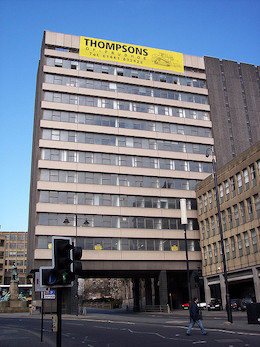
Co-Curate Page
Westgate House (1972-2006)
- Westgate House was 12 storey office block on Westgate Road opposite Central Station. This 'Brutalist' building was completed in 1972. The building was purchased by One North East in association …
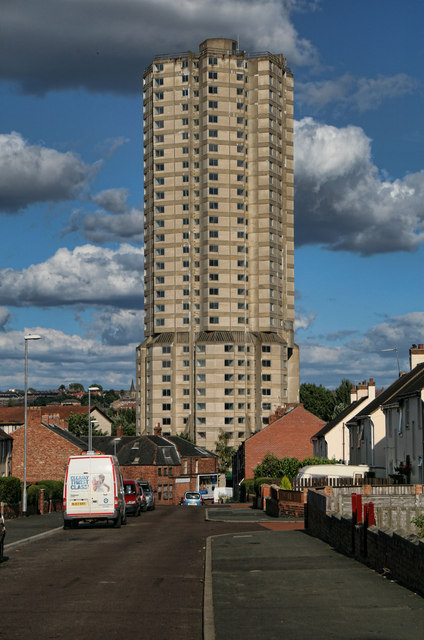
Co-Curate Page
Derwent Tower, Dunston
- Overview About Derwent Tower Derwent Tower, knick named the "Dunston Rocket" was a 29-storey apartment block and was a prominent landmark in Dunston, Gateshead. The tower was commisioned by Whickham …
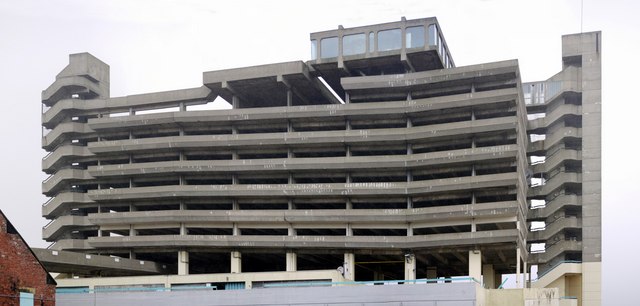
Co-Curate Page
Trinity Square Car Park
- The Trinity Square in Gateshead was a 7 storey car park, above a supermarket and department store. The Brutalist style building was designed by Luder & Worthington in 1962 and …
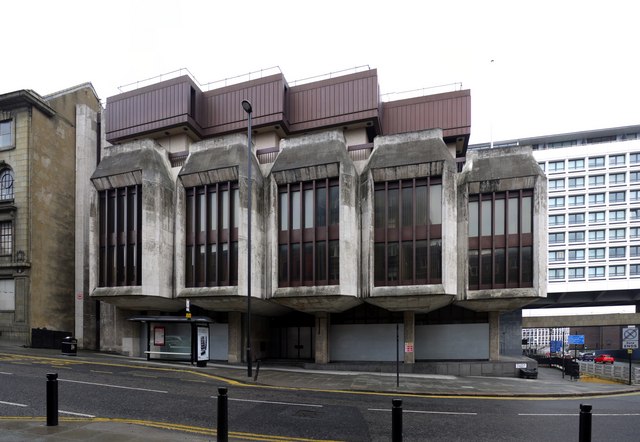
Co-Curate Page
Former Bank of England
- The former Bank of England building on Pilgrim Street was built 1968-1971 by Fitzroy, Robinson & Partners. The building was demolished in 2012.

Co-Curate Page
Killingworth Towers
- Killingworth Towers were built in the early 1970's with a well-intentioned 'streets in the sky' approach with 'decks' above the roads designed to provide social space and safe walking above …
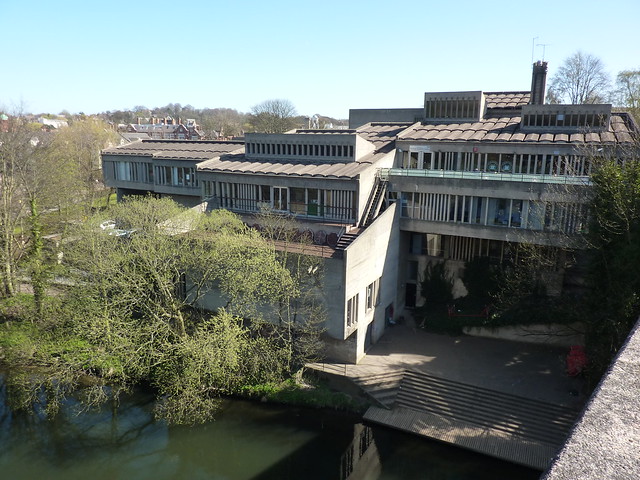
Co-Curate Page
Dunelm House
- Overview Map Street View Dunelm House is the Students' Union building at Durham University adjacent to Kingsgate Footbridge over the River Wear. Designed by Ove Arup, the angular concrete 'Brutalist' style …
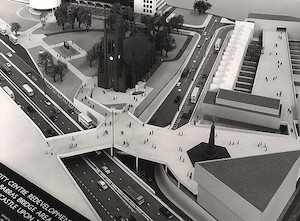
Co-Curate Page
City in the Sky - 1960's vision for Newcastle
- In the 1960's and early 1970's the 'city in the sky' vision was to separate out traffic from pedestrians. With increasing car ownership, towns and cities were becoming dominated by …
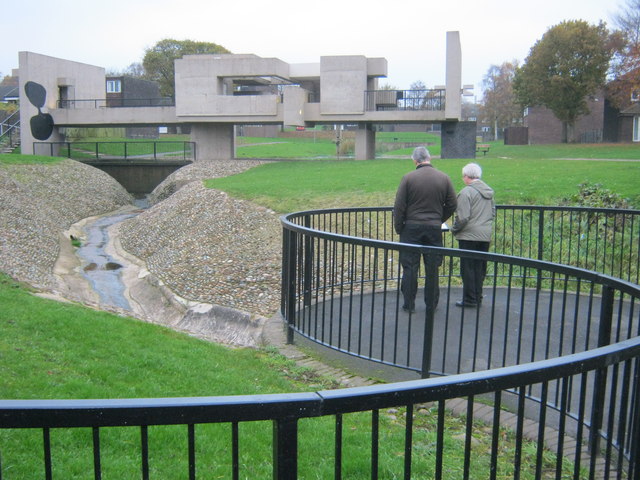
Co-Curate Page
Apollo Pavilion, Peterlee
- Overview About Apollo Pavilion Map Street View The Apollo Pavilion, also known as the Pasmore Pavilion, is a piece of public art in the new town of Peterlee in …
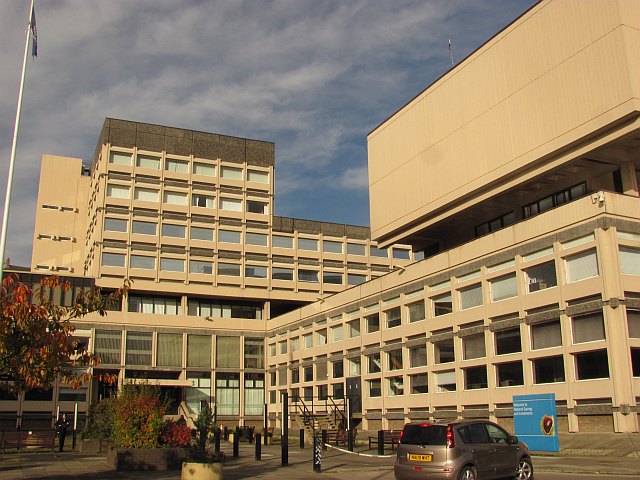
Co-Curate Page
Millburngate House
- Millburngate House, built in the 1960s, was the former home of the Passport Office and National Savings and Investments (NS&I), located in the Framwelgate Waterside area of Durham. The building was …

Co-Curate Page
William Whitfield (1920 - 2019)
- Overview About William Whitfield Sir William Whitfield architect (1920 - 2019). Born in Newcastle and studied architecture at King's College, which later became Newcastle University. Whitfield later designed the Kings …

Co-Curate Page
Commercial Union House, Pilgrim Street
- Commercial Union House was an 8 story office block, with a large projecting tower over Pilgrim Street in Newcastle. The Brutalist-style building was designed by Howell Brooks Tucker & Partners …


Co-Curate Page
Westgate House (1972-2006)
- Westgate House was 12 storey office block on Westgate Road opposite Central Station. This 'Brutalist' building was completed in 1972. The building was purchased by One North East in association …

Co-Curate Page
Derwent Tower, Dunston
- Overview About Derwent Tower Derwent Tower, knick named the "Dunston Rocket" was a 29-storey apartment block and was a prominent landmark in Dunston, Gateshead. The tower was commisioned by Whickham …

Co-Curate Page
Trinity Square Car Park
- The Trinity Square in Gateshead was a 7 storey car park, above a supermarket and department store. The Brutalist style building was designed by Luder & Worthington in 1962 and …

Co-Curate Page
Former Bank of England
- The former Bank of England building on Pilgrim Street was built 1968-1971 by Fitzroy, Robinson & Partners. The building was demolished in 2012.

Co-Curate Page
Killingworth Towers
- Killingworth Towers were built in the early 1970's with a well-intentioned 'streets in the sky' approach with 'decks' above the roads designed to provide social space and safe walking above …

Co-Curate Page
Dunelm House
- Overview Map Street View Dunelm House is the Students' Union building at Durham University adjacent to Kingsgate Footbridge over the River Wear. Designed by Ove Arup, the angular concrete 'Brutalist' style …

Co-Curate Page
City in the Sky - 1960's vision for Newcastle
- In the 1960's and early 1970's the 'city in the sky' vision was to separate out traffic from pedestrians. With increasing car ownership, towns and cities were becoming dominated by …

Co-Curate Page
Apollo Pavilion, Peterlee
- Overview About Apollo Pavilion Map Street View The Apollo Pavilion, also known as the Pasmore Pavilion, is a piece of public art in the new town of Peterlee in …

Co-Curate Page
Millburngate House
- Millburngate House, built in the 1960s, was the former home of the Passport Office and National Savings and Investments (NS&I), located in the Framwelgate Waterside area of Durham. The building was …

Co-Curate Page
William Whitfield (1920 - 2019)
- Overview About William Whitfield Sir William Whitfield architect (1920 - 2019). Born in Newcastle and studied architecture at King's College, which later became Newcastle University. Whitfield later designed the Kings …


